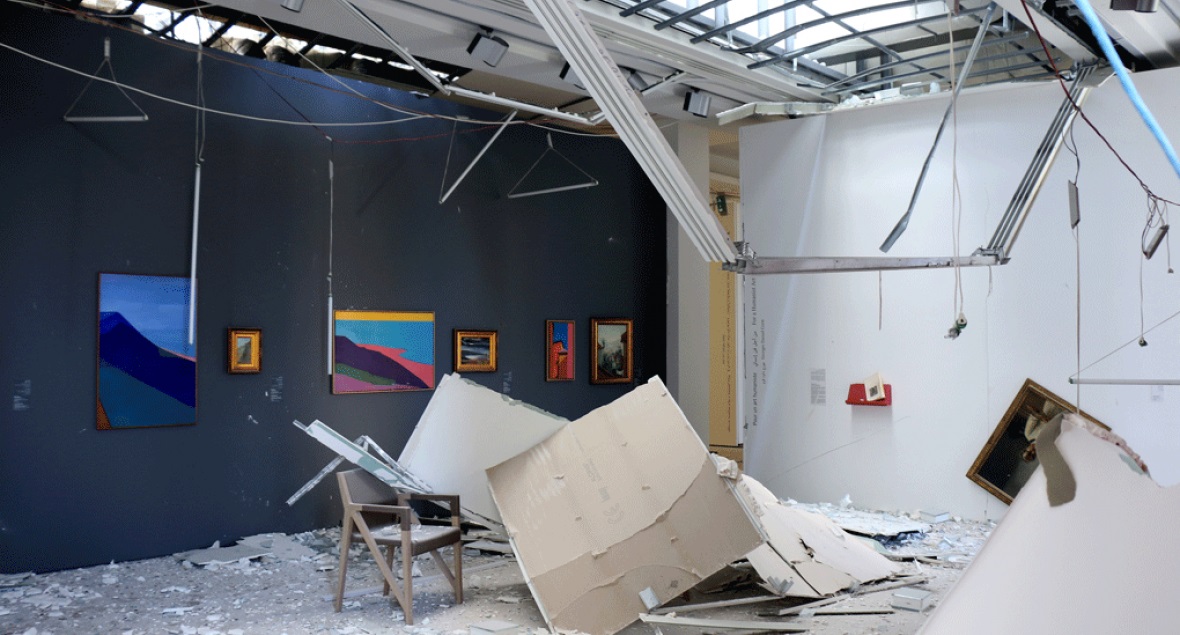
Before the Explosion - The Sursock Museum in Beirut
In March 2020, the Sursock Museum in Beirut was digitised as a virtual tour to remain open to the public despite closure by Covid-19. These recordings now take on far greater significance than originally thought due to the extensive damage to the building caused by the explosion in Beirut harbour.
When it comes to archiving art and cultural history pieces, people often talk and think about digitisation or the "digital twin". How quickly and suddenly this twin can be needed because the originals have been partially or almost completely destroyed can be seen once again in the Sursock Museum in Lebanon. In an explosion in the port of Beirut on 4 August 2020, in which over a thousand people lost their lives and countless more suffered injuries, all buildings in a large radius were also damaged. This includes the Sursock Museum, which is located about 800m from the site of the explosion.

Not only were the window panes completely destroyed, but many doors, ceilings and walls were also badly affected. Flying debris and falling ceiling and lamp constructions damaged 40 of the 130 paintings on display, some of them severely. Among them, according to the museum, was the most valuable painting in the collection, the portrait of Nicolas Sursock, painted by Kees van Dongen (1930).
The digitisation in March 2020 was actually carried out in order to be able to continue exhibiting and mediating, despite the Covid-19-related closure of the museum. A publication or "virtual opening" of the tour was planned for August, but events preempted this. Now the photographs are being used to restore the original condition of both the building and the individual exhibits. The panoramas are invaluable for the restorers, as they document every detail of the exhibition and the collection pieces without gaps for the first time.
The company "Paravision Virtual Tour Solutions" was commissioned to record the exterior and interior. By using the fully automatic piXplorer recording system from the manufacturer CLAUSS, it was possible for engineer Walid Nohra to create all the panoramas within a few hours and still meet the museum's high quality requirements. A Nikon z7 was used with a lens from the same manufacturer with a focal length of 24mm. By using a slightly longer focal length than usual for panoramas, even the finest details and structures are clearly depicted in the tours.
Read the full report here:
https://sursock.museum/content/blast-virtual-tour-sursock-museum
You can access the virtual tour here:
http://virtualtour.sursock.museum/
You can follow an appeal for donations for the reconstruction of the museum at this link:
https://sursock.museum/content/help-us-rebuild-sursock-museum
